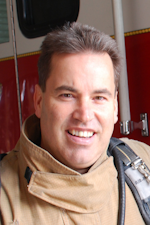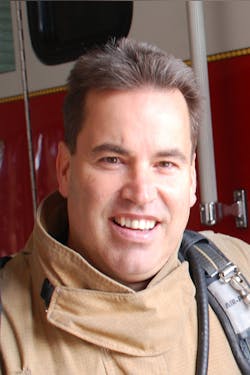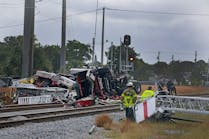We have long advocated against continuing the firefighter humble-hero mindset, where we respond to life-and-death emergencies, and then simply shrug it off as just “doing our job.” Today’s society has evolved, and in order to remain a valued and supported community service, we must keep pace. Further, our increasingly abstract-digital society has become disengaged and skeptical of such holistic actions and intentions. While we may successfully put out the neighbor’s fire or handle their emergency, today’s citizens are asking more and more, “What have you done for ME today?” Due to our humble public service history, the fire service has been ill-equipped to respond to this critical question. But we must be prepared to answer this and the increasing line of questioning and challenges—and do so in a manner to which this modern digital society can relate. Simply put, we need to know how to describe our value to the community in terms that elected officials, taxpayers and finance folks can understand. We must speak their language. Fortunately, there is a way to help bridge this gap.
SCILL equation
Created by Levesque at the South Carolina Institute of Leadership, the SCILL equation is a formula for any department to translate who they are and what they are able to provide, and then break it down into the language that is universally understood across every societal spectrum. With a little understanding, an investment of time and perhaps someone who fancies math, you can determine an actual dollar value for your department. Utilizing common public information, such as tax records, insurance rate averages and some good old-fashioned sweat equity, you can input all that information into the SCILL equation and determine a legitimate dollar value to your community.
Ultimately, it boils down to how much you save every property owner whom you protect based on an improved ISO rating (i.e., a 5 instead of 10). If you can enter the budget process annually with legitimate numbers that show you are worth, say, $15 million plus to the citizens you protect before you even respond to a single call for assistance, then imagine how much easier it would be to ask for $500,000 for a new engine or to start a new Community Risk Reduction program? That is talking dollars and cents, that is the language of civic leaders, and that is why the equation works.
Here’s a simple step-by-step example:
1) You protect 10 properties in your fire district
2) You determine that the collective value of those 10 properties is $10,000
3) $10,000/10 = $1,000 or the average value of each property
(Note: Steps 1–3 are determined using information gathered from your county tax offices.
4) You then learn that the average insurance rate for your area is $35 per $100 of value
5) If each property is valued at $1,000, then we can determine the average insurance rate: 1,000/100 = 10 x $35 = $350 is the average insurance rate
6) We then assume that each of our 10 properties would pay $350 a year for homeowner’s insurance without a fire department or with a fire department that has an ISO rating of 10
7) We then learn from a local insurance specialist the average savings from one ISO grade to the next:
- ISO 10 – 350 per $100 of value = $350
- ISO 9 – 5% savings = $332.50
- ISO 8 – 9% savings = $318.50
- ISO 7 – 13% savings = $304.50
- ISO 6 – 19% savings = $283.50
- ISO 5 – 23% savings = $269.50
- ISO 4 – 27% savings = $255.50
- ISO 3 – 31% savings = $241.50
- ISO 2 – 35% savings = $227.50
- ISO 1 – 39% savings = $213.50
(Note: Steps 4–7 are determined using information gathered from a local insurance specialist.)
8) Based on your ISO rating, how much do you save the average property owner each year? Let’s say that your fire department has an ISO rating of 3. That means you save each of your property owners an average 31 percent on their homeowner’s premiums annually.
9) Then take 31 percent of $350 = $108.50. That means that you save each of the 10 properties you protect an average $108.50. If you put that together: $108.50 x 10 = $1,085. You therefore save those you protect an estimated $1,085.
10) Lastly, to get a “true value,” you must subtract your operating budget. Let’s say for ease of calculation that your fire department operates on a $250 budget for the year: $1,085 - $250 = $835.
We have just learned that your fire department has a true value of $835 to its community. We know some of you are saying, “Well that doesn’t seem like much!” But remember that we used simple, low numbers for ease of understanding. If you want to get a more realistic understanding, simply look back at the numbers above, but place 4 or 5 zeroes behind each number. How well could you justify your next budget if you could stand before your approval board or mayor, etc., and legitimately state that your department is worth (saves) $8.35 million a year all for the price of $2.5 million (operating budget)?
Here’s a real-life example for a department we’ll call Department XYZ. This department protects roughly 145 square miles of mixed populace (municipal, rural and resort), including just over 22,000 individual properties of all types, and those properties at the tax office were worth a taxable value of just under $6 billion.
According to local insurance professionals, it was determined that Department XYZ and its ISO rating (even split as it was) saved their protected property owners an average of $16 million in insurance premiums every year that they were in existence. From there, a simple subtraction of the overall department budget determines that Department XYZ was worth over $12 million to their residents eight years ago. A more recent reevaluation of that data, along with an improved ISO rating, shows that the department is now worth approximately $15 million to the citizens it protects.
Two important things here to note: First, the determined value is annual. Each year that the department holds that respective ISO grade and property values support the process, the agency renews its value. Second, not every agency that works through this process will find themselves on the beneficial side of the numbers. We have found some departments that have not yet figured out how to translate their budget into ISO savings or vice versa. However, armed with information like that gleaned from the SCILL equation, many departments, like Department XYZ, are able to make the case to purchase new apparatus, build a new station and/or promote new officers.
Marketing tool
The SCILL equation is intended to be a tool with which a department leader can justify the budget, albeit with capital improvement projects or staffing increases, or simply holding the line against budget or staffing cuts. But in addition to budget benefit, the SCILL information can also be used as a marketing program to the taxpayers and the public at large to gain/maintain public support.
Fire departments today need to be in the marketing business, to both their internal and external customers, and accept that their value can no longer be assumed through noble intentions and mitigated emergencies. For centuries, the fire service has had no need to market or sell itself because fire was a perceived threat to every home and neighborhood in the community. During those times our actions spoke louder than words, and society respected the humble persona.
Reality TV, 24/7 news coverage based upon “click-baiting” drama and other factors have changed all that, burying the fire service in all of the noise. Our humble “just doing my job” reply has now become the normalized expectation of our profession because that is how we have “marketed ourselves”—that risking our lives responding to increasingly dangerous and complex emergencies is “just doing our job” and “nothing special.” And while our citizens may truly appreciate what we do, that appreciation doesn’t always equate to a value worth their increasingly stretched income and taxes. This is where SCILL can come in, helping demonstrate a department’s worth in ways that the public will understand.
In sum
The SCILL equation is a valuable tool to provide a factual and supported answer to demonstrate a solid daily value, and demonstrate it in a universal language and manner that any taxpaying citizen can understand, and in a way that hits home—in their wallet. Whether using the equation or another formula, it is important that your fire department looks inward at the services it provides and takes nothing for granted. We know our value. We know what we provide. This is not about changing who we are; it is about communicating it better.

Daniel Byrne
DANIEL BYRNE is a community support officer for the Burton Fire District, Beaufort County, SC, and a retired assistant fire chief of training for the Georgia Air National Guard 165th Fire Department. A third-generation firefighter, he holds an associate degree and a bachelor’s degree in fire science as well as a master’s degree in public administration and disaster management. Byrne is an alumnus of the National Fire Academy. He received state and local awards for public relations and educational programs as well as community partnerships and served as a conference presenter and keynote speaker.






